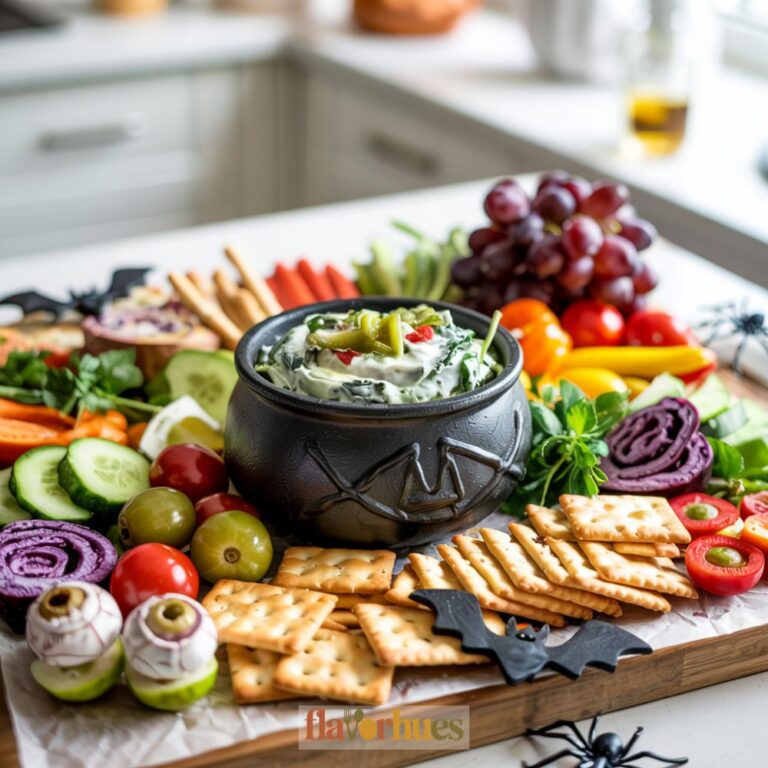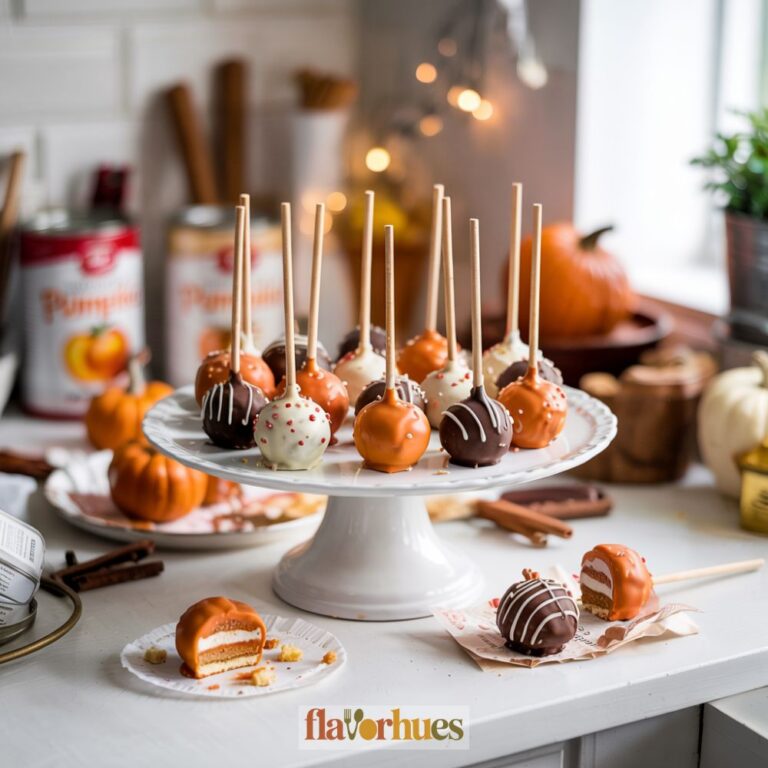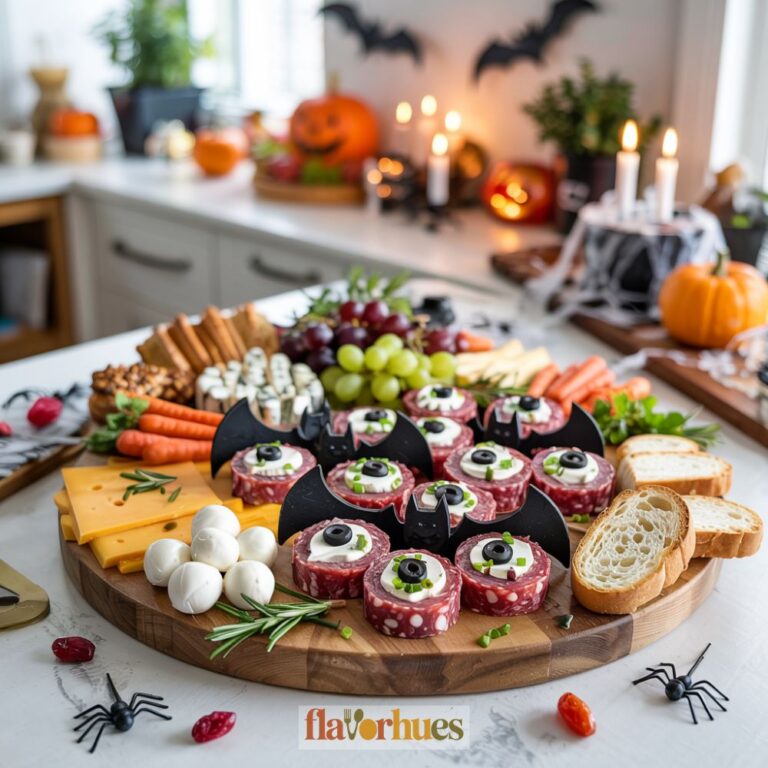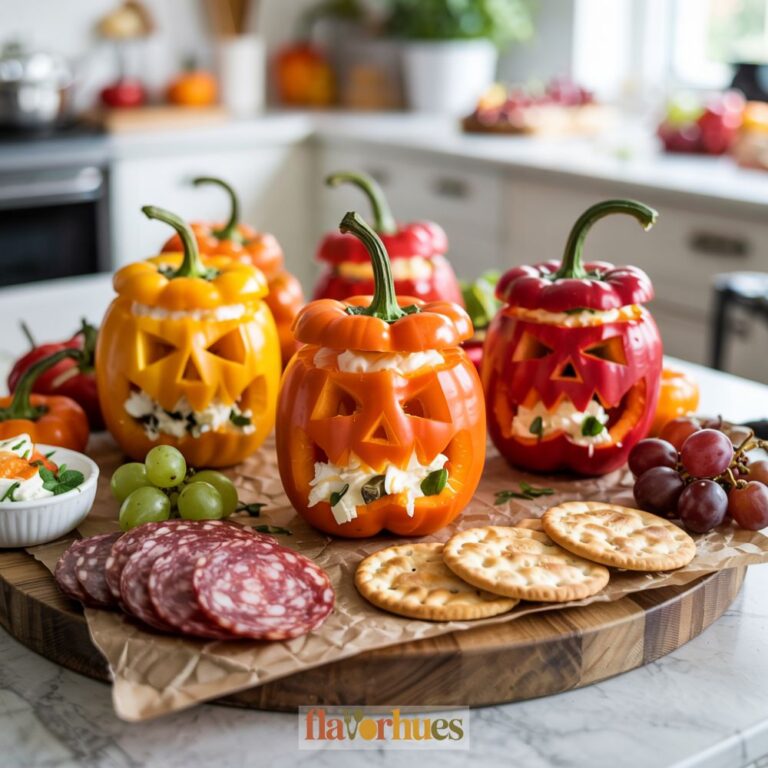Bloody Beet with Hummus Dip Charcuterie Board Recipe
I’m always looking for new ways to make healthy food actually look fun. This Bloody Beet with Hummus Dip Charcuterie Board is honestly one of my favorites.
It brings a ton of bright color to the table and just works for gatherings or even random snacks at home. This recipe walks you through how to make a beet hummus dip and build a simple charcuterie board, step by step.
Whenever I set this out at parties, friends always ask for the recipe. The flavors are a bit different and the board just looks beautiful.
The best part? It’s quick to pull together using easy-to-find ingredients. You really don’t need any special skills or fancy tools to make it look impressive, which is a relief.
If you’re after a tasty way to sneak more beets into your snacks, this is for you. I’m genuinely excited to show how easy it is to make this colorful, healthy board.
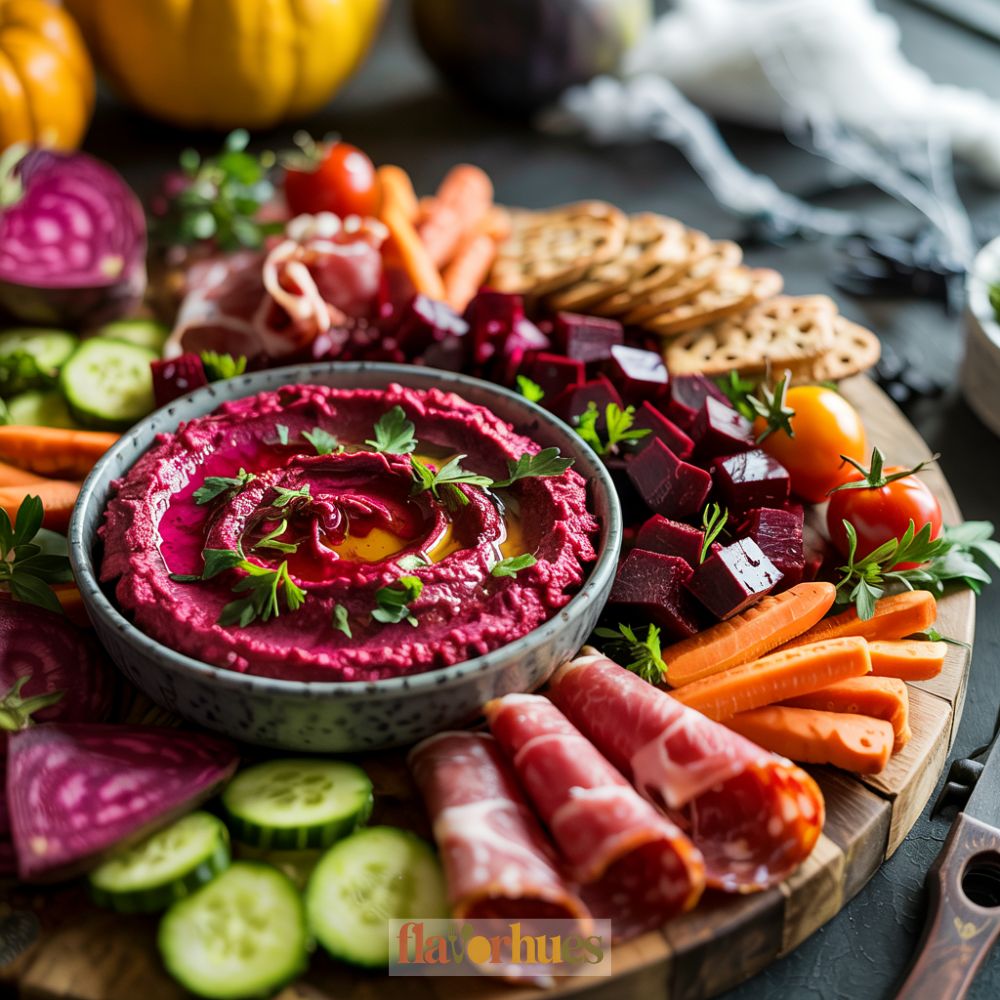
Why I Love Them
I keep coming back to this Bloody Beet with Hummus Dip Charcuterie Board because it’s so easy to pull off and looks amazing on the table. The colors from the beets, veggies, and dips just pop, especially when you’ve got friends or family over.
The flavors really work. I love how the sweet roasted beets taste with the creamy hummus. That combo of crunchy crackers, smooth dips, and crisp veggies just hits the spot.
Here’s what stands out to me:
- Colorful: Reds, pinks, greens—it’s just fun to look at.
- Healthy: So many fresh veggies, so I don’t feel guilty snacking.
- Everyone Likes Something: People can pick what they like best from the board.
I like that I can prep most of it ahead. Less stress when people show up.
The board’s easy to tweak. Sometimes I’ll throw on olives, cheese, or even sliced fruit, so it never gets boring.
Equipment
I use just a few basic tools for this Bloody Beet with Hummus Dip Charcuterie Board. Odds are, you already have most of them.
Here’s what usually ends up on my counter:
- A large charcuterie board or a wooden tray
- Chef’s knife and a smaller paring knife
- Vegetable peeler
- Small cutting board
- Small mixing bowls
- Measuring spoons and cups
- Serving spoons or spreaders
I use a food processor to get the hummus super creamy. If you don’t have one, a blender works in a pinch.
For a tidy look, I like using ramekins or little bowls for dips. Keeps wet stuff away from the crackers and veggies.
Small tongs are handy for guests to grab snacks. I scatter some napkins and small plates nearby too.
If I’m roasting beets myself, a baking sheet and foil are helpful. Or just use canned or pre-cooked beets and skip that step.
| Equipment | Use |
|---|---|
| Charcuterie board | Displaying the food |
| Food processor | Blending hummus ingredients |
| Small bowls | Serving dips and sides |
| Knife & peeler | Prepping veggies and beets |
Ingredients
For my Bloody Beet with Hummus Dip Charcuterie Board, I lean into color and simplicity. Here’s what usually goes on mine:
Beet Hummus Dip:
- 1 cup cooked beets, chopped
- 1 can (15 oz) chickpeas, drained and rinsed
- 3 tablespoons tahini
- 2 tablespoons lemon juice
- 1 garlic clove
- 1 tablespoon olive oil
- 1/2 teaspoon salt
Charcuterie Board Favorites:
- 8 slices of salami
- 6 slices of prosciutto
- 1/2 cup cherry tomatoes
- 1/2 cup sliced cucumber
- 1/2 cup baby carrots
Here’s a quick table to keep track:
| Item | Quantity |
|---|---|
| Cooked beets | 1 cup (chopped) |
| Chickpeas | 1 can (15 oz) |
| Tahini | 3 tbsp |
| Lemon juice | 2 tbsp |
| Garlic | 1 clove |
| Olive oil | 1 tbsp |
| Salt | 1/2 tsp |
| Salami | 8 slices |
| Prosciutto | 6 slices |
| Cherry tomatoes | 1/2 cup |
| Cucumber | 1/2 cup (sliced) |
| Baby carrots | 1/2 cup |
I usually toss on a handful of crackers, some sliced bread, maybe a few olives or nuts if I have them. It helps fill out the board and adds a little crunch.
You can swap out any veggies or meats, depending on what’s in the fridge.
Instructions
First, I wash and peel the beets. Then I cut them into small cubes, about an inch wide.
I preheat the oven to 400°F (200°C). I toss the beet cubes with a tablespoon of olive oil, a pinch of salt, and a little pepper.
Next, I spread the beets on a baking sheet in a single layer. They roast for about 30-35 minutes—turn them halfway—until they’re tender and a bit crispy on the edges.
While the beets roast, I get the hummus dip ready. Sometimes I just scoop store-bought hummus into a bowl, or I’ll make my own with blended chickpeas, olive oil, garlic, lemon juice, and a pinch of cumin.
Once the beets are done, I let them cool for about 10 minutes. Then it’s time to assemble the charcuterie board.
Here’s how I usually arrange things:
- Put the bowl of hummus in the center.
- Line up the roasted beets around the hummus.
- Add other veggies—carrot sticks, cucumber rounds, cherry tomatoes—if I have them.
- For extra flavor, drizzle olive oil on the hummus and sprinkle with chopped parsley.
I keep small forks or toothpicks nearby for easy dipping. That’s it—ready to dig in!
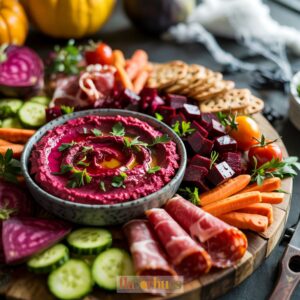
Equipment
- Charcuterie board or large wooden tray
- Food processor or blender
- Small serving bowls or ramekins
- Paring knife
- Vegetable peeler
- Small cutting board
- Tongs (optional for serving)
- Baking sheet and foil (if roasting beets)
Ingredients
Beet Hummus Dip:
- 1 cup cooked beets chopped
- 1 can 15 oz chickpeas, drained and rinsed
- 3 tablespoons tahini
- 2 tablespoons lemon juice
- 1 garlic clove
- 1 tablespoon olive oil
- 1/2 teaspoon salt
Charcuterie Board Items:
- 8 slices salami
- 6 slices prosciutto
- 1/2 cup cherry tomatoes
- 1/2 cup sliced cucumber
- 1/2 cup baby carrots
- 1 box crackers
- 1 cup sliced cucumbers
- 1 cup baby carrots
- 1/2 cup olives
- 1½ cups beet hummus
- Optional: 6-8 hard boiled egg halves
- Optional: 4 oz sliced goat cheese or mozzarella
- Optional: 1 cup roasted veggies carrots, sweet potatoes, red onion
- Optional: 2 tablespoons pumpkin or sunflower seeds
- Optional: 4 oz sliced salami
- Optional: Sliced and toasted baguette
Instructions
Roast the Beets (if not using pre-cooked):
- Preheat oven to 400°F (200°C).
- Wash, peel, and chop beets into 1-inch cubes.
- Toss with olive oil and a pinch of salt and pepper.
- Spread on a baking sheet and roast for 30–35 minutes, flipping halfway through, until tender. Let cool for 10 minutes.
Prepare the Beet Hummus:
- In a food processor, combine roasted beets, chickpeas, tahini, lemon juice, garlic, olive oil, and salt.
- Blend until smooth and creamy. Adjust seasoning if needed.
Assemble the Charcuterie Board:
- Place a bowl of beet hummus at the center.
- Arrange salami, prosciutto, cherry tomatoes, cucumber slices, baby carrots, and crackers around the hummus.
- Use small bowls for olives, dips, or anything juicy to avoid soggy crackers.
- Optionally, add hard-boiled eggs, roasted veggies, cheeses, or toasted bread for variety.
Garnish and Serve:
- Drizzle olive oil over the hummus and sprinkle with chopped parsley or seeds.
- Serve immediately with small spoons, spreaders, or tongs for guests to use.
Substitute
Sometimes I’m out of something or just want to try a twist. Here are swaps I use for the Bloody Beet with Hummus Dip Charcuterie Board.
No beets? Roasted carrots or sweet potatoes work. Both give a sweet, earthy flavor and look pretty on the board.
For hummus, I’ll use white bean dip or guacamole. White bean dip is creamy and mellow, while guac adds a zesty kick.
If I’m out of cheese, I just use what’s in the fridge. Here’s a table I made for quick swaps:
| Cheese in Recipe | Substitute Idea |
|---|---|
| Feta | Goat cheese |
| Cheddar | Swiss or gouda |
| Brie | Camembert or cream cheese |
No pita chips? Crackers, pretzel sticks, or tortilla chips all work. They make the board extra crunchy.
If I’m missing cherry tomatoes or cucumber, I’ll add sliced bell peppers, radishes, or snap peas.
For meats, salami and ham can be swapped with turkey slices or roast beef.
Making it vegan? I’ll skip cheese and meat and add extra fruit—grapes or sliced apples are great.
Trying out swaps helps me use what’s already in my kitchen and keeps the board interesting every time.
What Can Go Wrong?
Sometimes my beet hummus just turns out too runny. If I go overboard with the olive oil or lemon juice, it ends up watery instead of creamy, which is a bit disappointing.
I’ve definitely had trouble with undercooked beets, too. When that happens, the dip tastes way too earthy and never gets smooth enough for my liking.
Chopping the beets into smaller pieces before roasting seems to help them cook more evenly. It’s a little extra work, but worth it.
Presentation can be its own headache. I’ve put wet or juicy veggies too close to crackers before, and—yeah, soggy crackers aren’t great.
Now I use small bowls for dips and anything juicy. That keeps the dry stuff safe, at least most of the time.
Sometimes the flavors on the board start to mingle in weird ways. Strong flavors like pickles can totally overpower milder ones, like carrots.
I try to keep bold and mild items apart, kind of like this:
| Bold Flavors | Mild Flavors |
|---|---|
| Pickles | Carrot sticks |
| Olives | Cucumber |
And, honestly, I sometimes forget about food safety. If I leave the board out too long, stuff like hummus and cheese can spoil before I even notice.
I try to set a timer for no more than two hours to keep things fresh, but I’ll admit, I don’t always remember.

